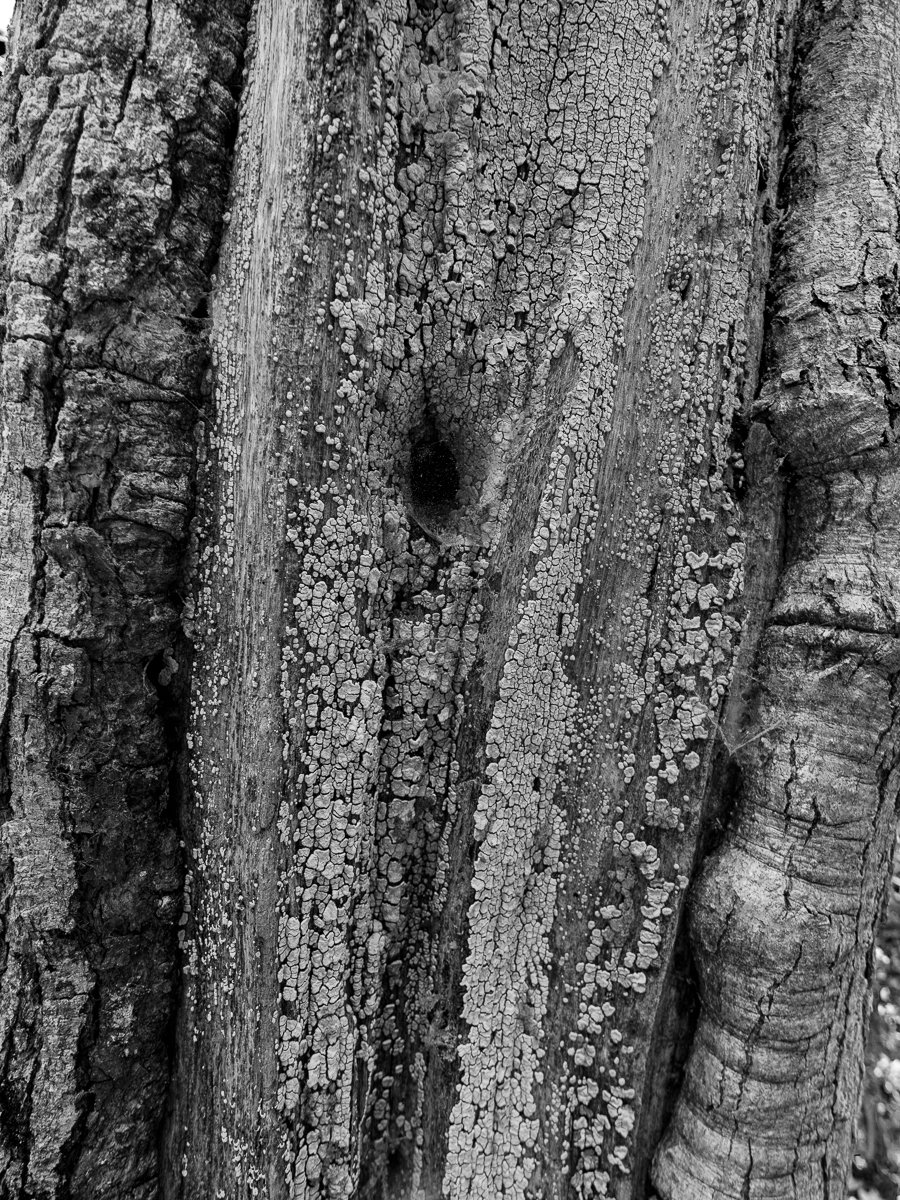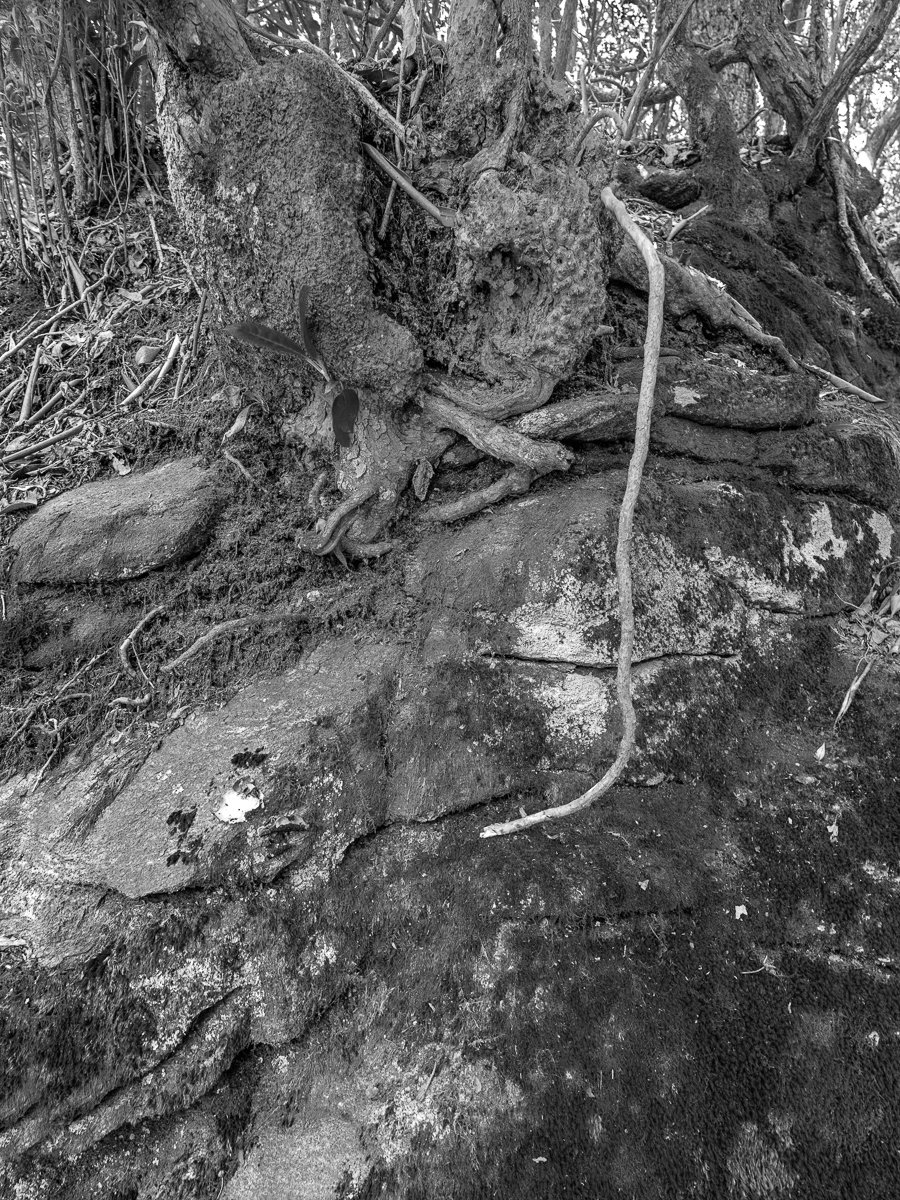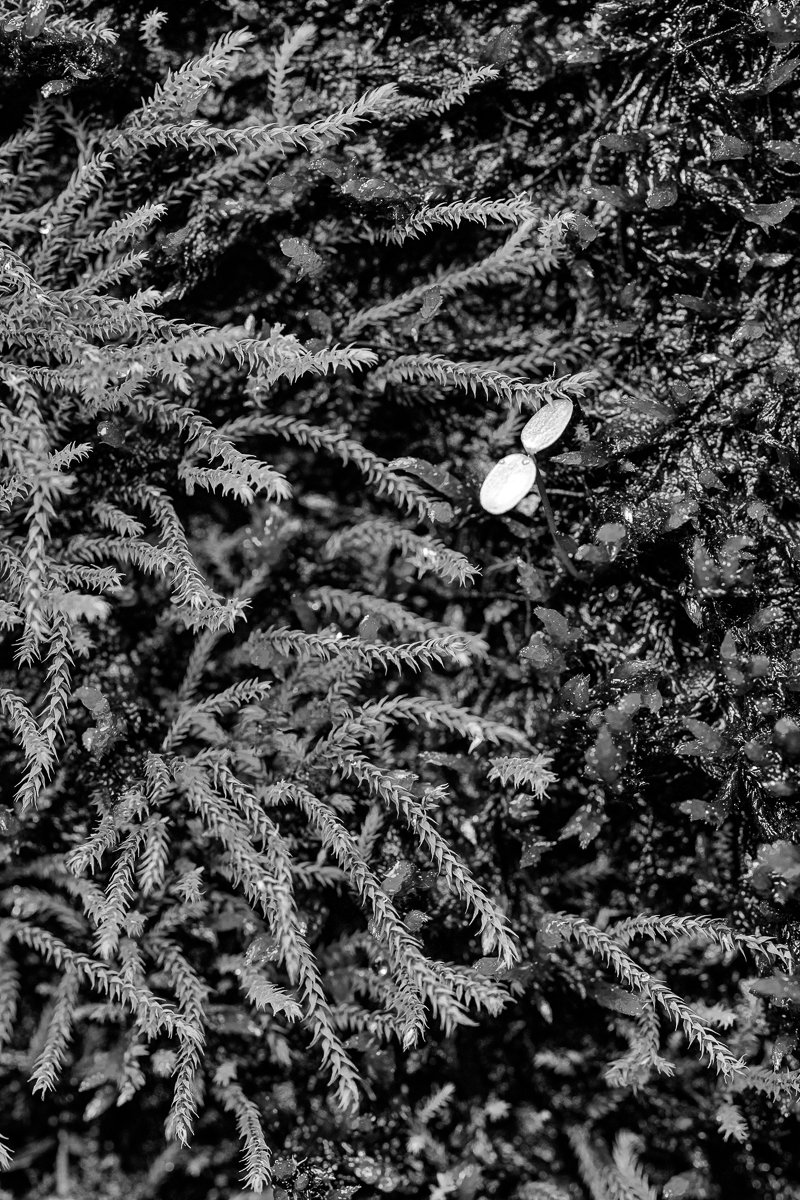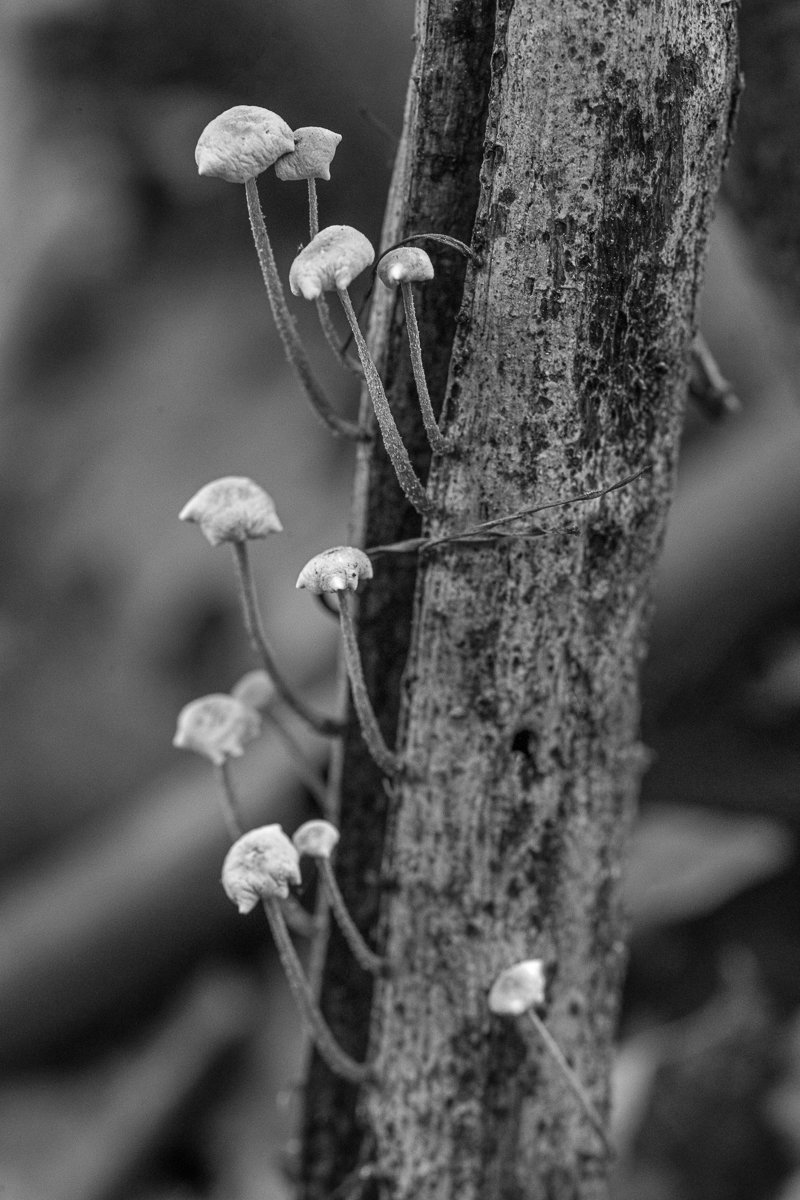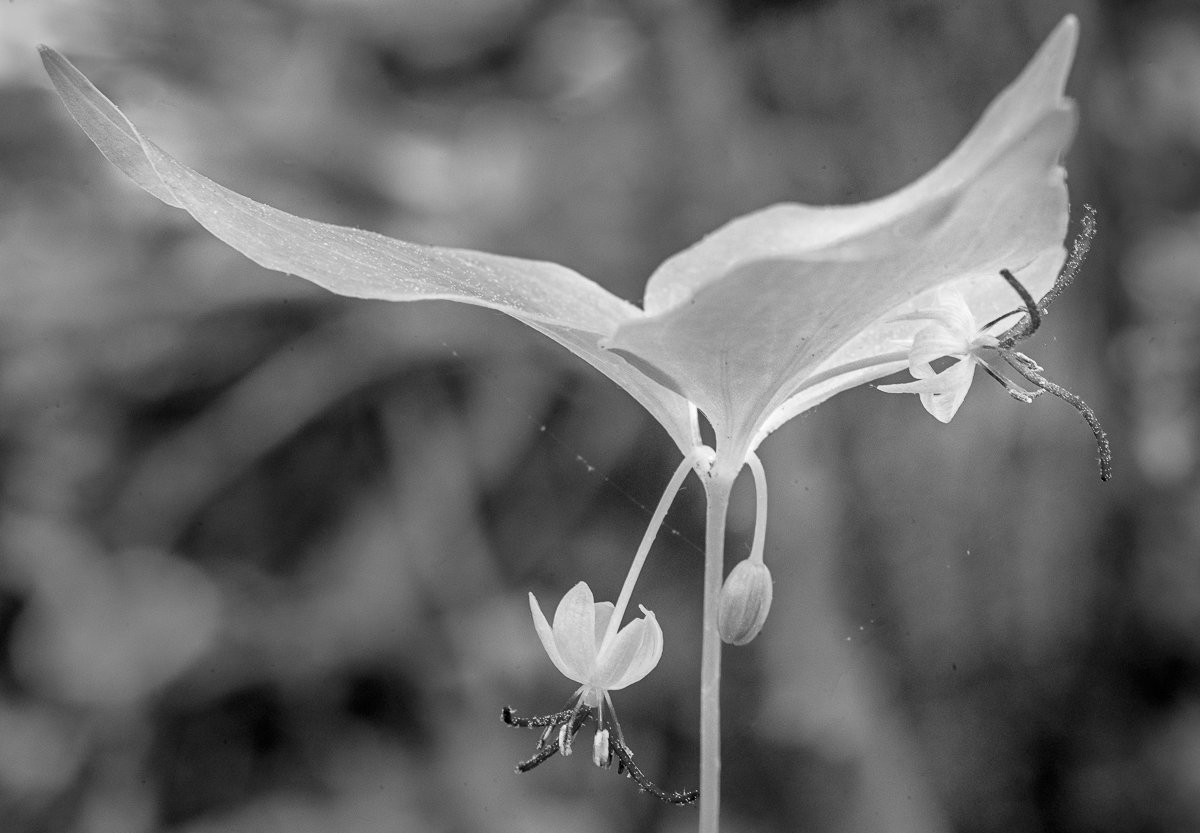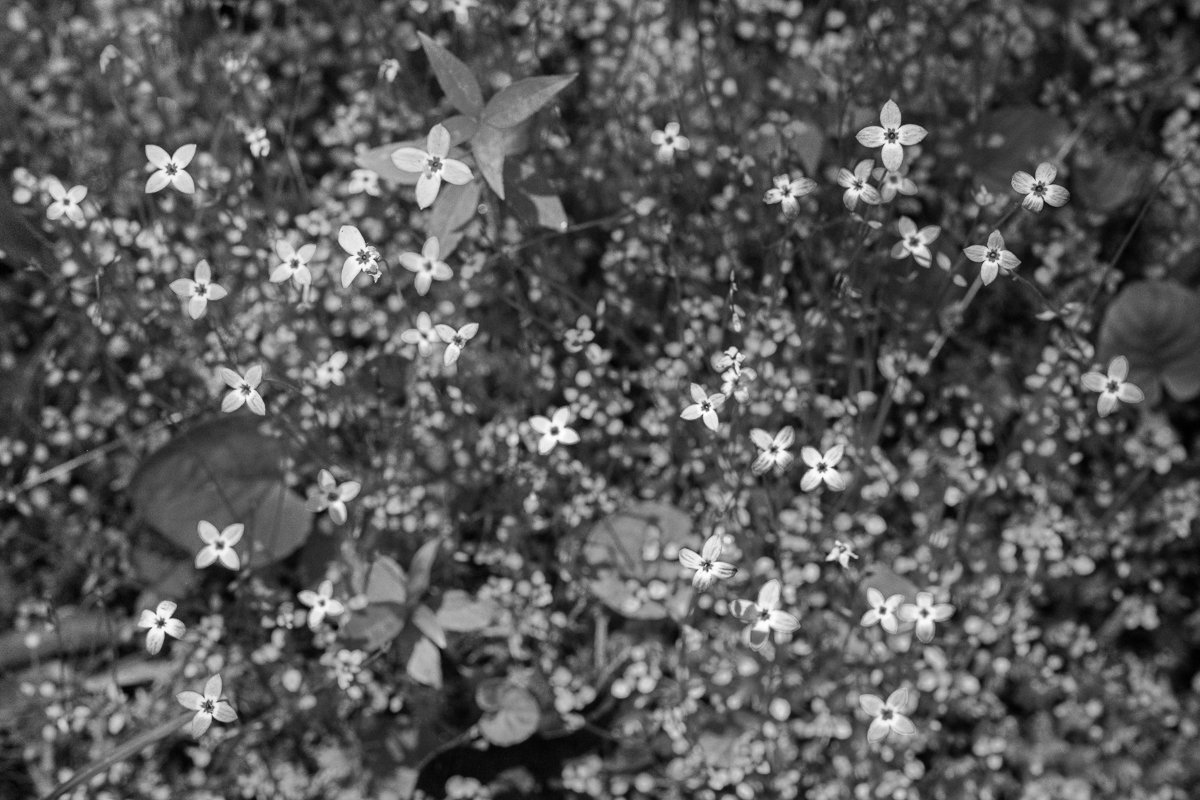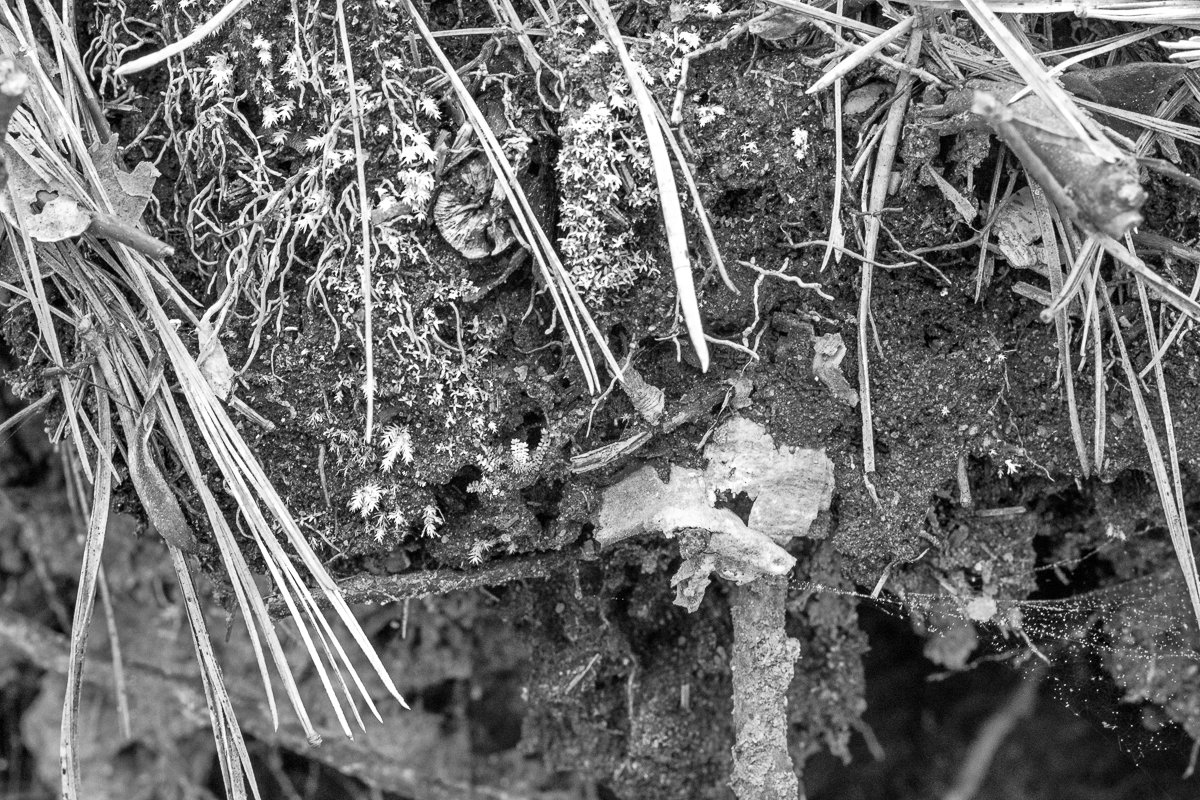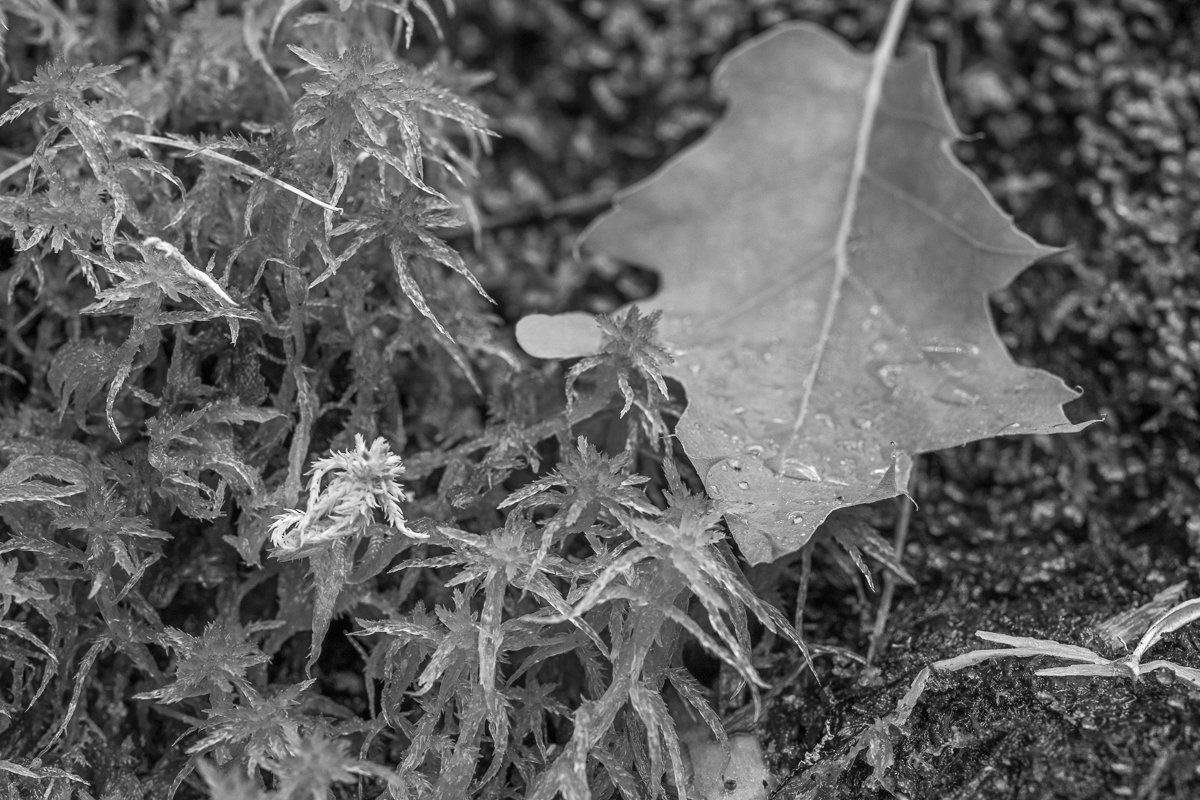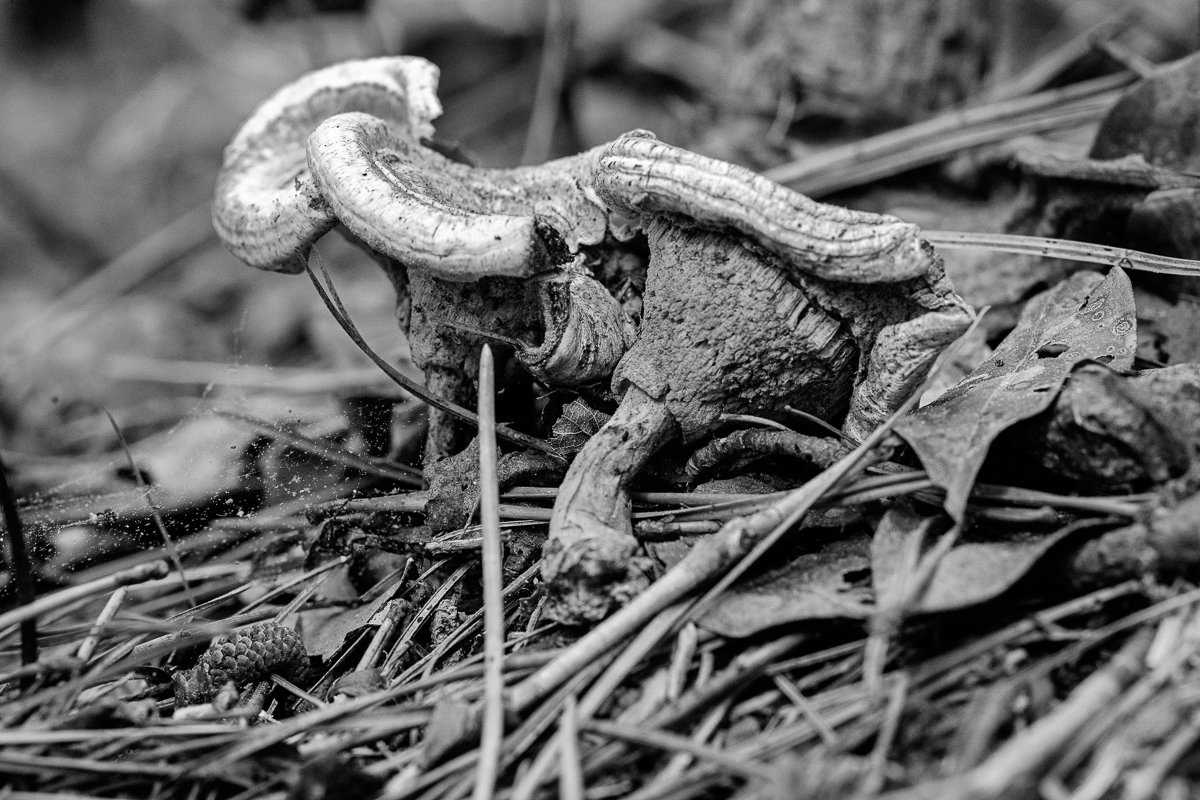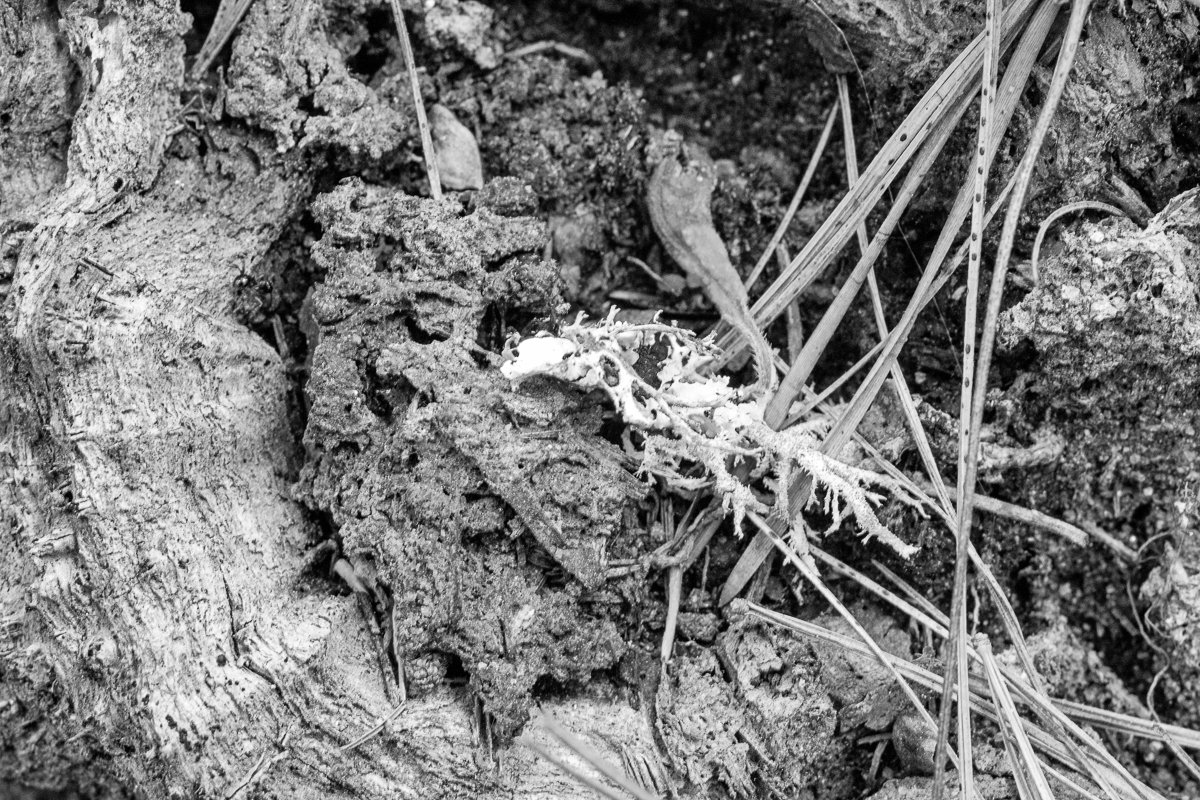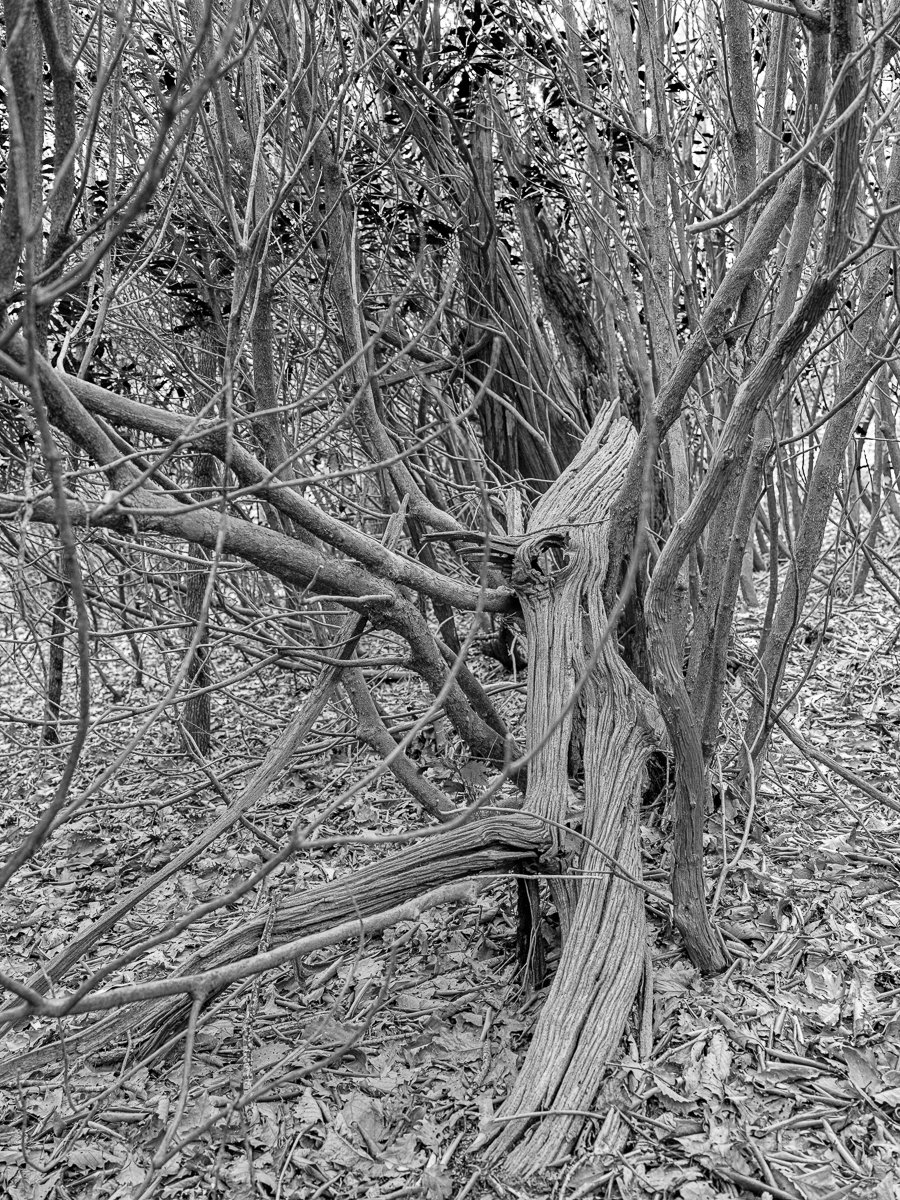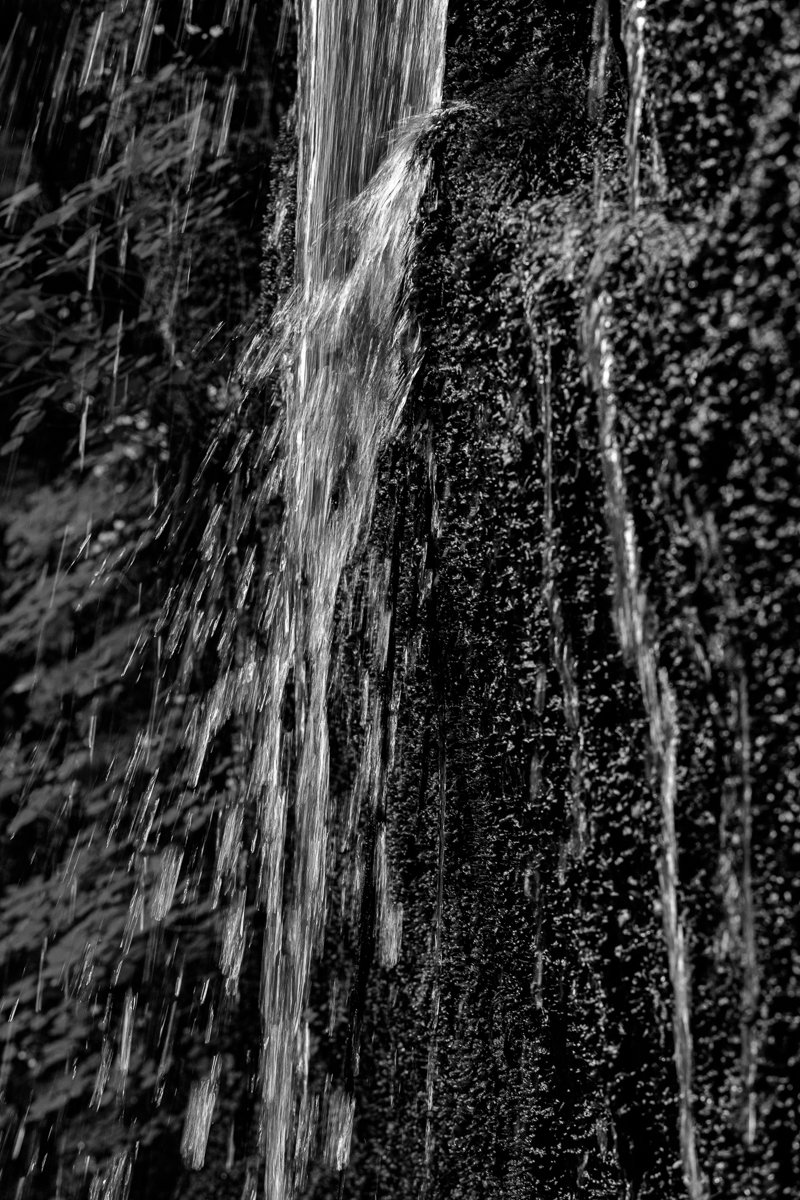Listening to the Land on the Bartram Trail at Scaly Mountain
Invitation
When my husband and I visited Scaly Mountain last week, we came upon this section of the Bartram Trail where rhododendron branches arched over the path and knit together so completely that the sky was obscured. In the distance, there was a trace of light and I felt it was an invitation to enter this land more deeply and perhaps connect with another dimension of being. A few days later, I gave a presentation on my new book, The Poetry of Being, for the Kinship Photography Collective. During the discussion afterwards, Susan Patrice mentioned that she believes the climate crisis might be a crisis of intimacy. I have been pondering the meaning of her words ever since. I have always felt completely immersed in nature and imbedded in the environment in a way I can’t exactly put words to, and perhaps that is the point since verbalizing my feelings explicitly would mean that perceptually I was standing outside looking in. I often wonder if what I am doing in any way helps the current state of the planet, but if the climate crisis, the continued decimation of our old growth forests, and the pollution of our air and waterways is indeed a crisis of intimacy as Susan suggested, then perhaps inviting others to connect more directly with the land is useful after all.
Gnarly Trunks and Vines, Scaly Mountain
Part of the interesting thing about interacting with the nature is the tension that is always present. At the same time that we are invited into the landscape, there are also barriers to entry for both humans and other creatures. These barriers, whether in the form of thickets or boulders or whatever makes it difficult for us to proceed further, make it apparent that we aren’t necessarily supposed to go everywhere as some places offer refuge for other creatures. Although I feel totally connected with nature, and indeed we all are whether we realize it or not, our role is not to try and dominant ecosystems but to pick up cues and respect boundaries without falling into the fallacy of separation.
Perhaps one of the best things we can do is to observe with all our senses, so we can listen and connect with the lessons nature teaches us. The image on the left shows a tree with lots of mold growing on it. Molds break down dead trees, but on living trees they form symbiotic relationships. When fungus grows on trees, it collects moisture and provides food for algae, which in turn create food for the fungus through photosynthesis. In addition, different trees often grow and graft together too, in order to share resources. Sometimes they split apart, whether from contractions caused by temperature changes or illness. Life does what it can to survive for as long as it can, just as we do, sometimes working as one and sometimes coexisting side-by-side if that is more appropriate to preserve energy for the living parts that remain. I know when I was caring for my mother, I had to set certain boundaries and carve out time for myself to retain my own strength and energy so I could continue to help her as her condition worsened. I still feel pangs of guilt about not doing even more than I did, but nature shows us that this is a natural process to ensure survival.
So many lifeforms make tree bark home, whether trees are living or dead. I am not at all sure what type of fern or plant is feeding on the algae on the tree bark in the image on the left and will do some research to find out what it could be. It was so interesting to see some many layers of being and depth of life on this bark. The tree on the right was dead and hollowed out, but these tiny mushrooms with their elongated stalks seemed to find it the perfect place to latch on. All lifeforms seek the most optimum places to grow in a given region and fungi are critical to the survival and resilience of life, since they help turn elements of the forest into food and/or hospitable places to take root.
Reindeer lichen and mosses
These reindeer lichen and mosses on the summit of Scaly Mountain were spectacular. Lichen are comprised of fungus and algae living as one in a mutually beneficial relationship. The lichen live on top of the soil and birds use it for their nests too. This particular type of lichen got its name, because reindeer actually do eat it in areas where these creatures live. I was mesmerized by all the lifeforms on the ground here and felt as if I were looking into a cosmic galaxy, even though I knew it was an earthly scene. When I see, touch, and breathe in life like this, I feel healthier myself because lichen are indicators of excellent air quality. If there is a lot of excess nitrogen, or pollutants such as sulfur dioxide and ammonia in the air, lichen aren’t able to photosynthesize or respire and they can no longer live. Lichen are extremely important contributors to the richness of the planet’s biodiversity too. Looking at them makes you believe healthy life is possible, even with all the damage we have caused and continue to cause the Earth.
The Indian cucumber plant on the left was so delicate and beautiful and its leaves resembled the wings of a bird. I lay on the ground for quite some time watching the flowers sway in the breeze. It was interesting to see that one of the flowers grew horizontally while the other seemed to nod like a trillium. Everything does not bloom in the same direction and flowers, like people, seek what illuminates them and contributes to their thriving. The bluets in the image on the right covered another section of ground at the summit and resembled a miniature galaxy. The physicist Carlo Rovelli believes that entropy not energy drives the world. He notes that photosynthesis takes low entropy from the sun and deposits it into plants that are then eaten by animals. Life, he believes is characterized by a network of processes for increasing entropy. Without low entropy, energy would become uniform heat and reach a state of thermal equilibrium, in which nothing would happen anymore. All my life I have been fascinated by light and how it is known only through what receives and is illuminated by it. When I see plants like the ones above, I am even more grateful for light and the generative cycle of life that is begun and expanded through its concretization.
Another thing I found fascinating along these section of the trail, which also seemed to be a course for water to stream down during rainy periods, was the visibility of what goes on at the top and through the first six to twelve inches of soil. At the edges of the trail, where the water has eroded the earth, algae, spiders, roots, threads of mycelium, and biomass contributing to the richness of the soil were all revealed. There is so much going on beneath the surface that we usually aren’t privileged to see.
When we look down on the ground, what lies beneath our feet can seem diminutive and less important than what is at eye level or what towers over us. However, ever since reading Robert MacFarland’s book Underland, I have had an overwhelming desire to get down on the ground and study it at eye level to see what things look like from there, to perhaps envision, as Nan Shepherd strove to do in Living Mountain, how the ground views itself. The whole scale of things changes and it is harder to distinguish one element constituting or residing in the earth from another. A complex dance of interconnection seems to take place, in which individual elements retain aspects of what they are while simultaneously merging with other elements. Life is always a balance of polarities. Immersing ourselves in the landscapes or in ecosystems or societies is what allows us to live in harmony with the rest of life, not top down authoritarianism.
Whenever I walk in the forest, I always discover something I have never seen before, which makes me grateful to be alive and physically able to visit pristine places. In the image on the left, a large piece of the outer layer of a tree trunk had peeled off in one piece and was draped over neighboring rhododendron trunks on it’s way to becoming one with the earth. The image on the right was of water cascading over a beautiful moss-covered wall in a secluded area of the forest. The mosses drank in as much water as they could, with the rest cascading off into the air and watering epiphytes and other lifeforms nearby.
Mixed Up Cairns Signaling Time and Space are Illusions
One of my favorite quotes is by Jon Kabat Zinn who wrote, “wherever you go, there you are.” In today’s fast-paced world we often find ourselves running hither and yon with no real idea of why or where we are trying to go, and often it all seems futile if we are not tuned into a deeper awareness. After spending so much of my life traversing the earth, or participating in marathons or triathlons, or even hiking all these trails I go on, I realize the journeys I make are often spiraling or zigzagging around what being alive means to me and the nature of being human and living on this earth. We follow what we think are signs, but then high winds or floods or even other humans come and mix things up and suddenly we might feel lost until we realize we are where we have been all along and there is nowhere else we are supposed to be. Really, there is a lot of chaos in life, which is a problem when we expect things to be ordered but not so difficult when we learn to go with the flow. Rovelli wrote the following, which is worth meditating on: “What causes events to happen in the world, what writes its history, is the irresistible mixing of all things, going from the few ordered configurations to the countless disordered ones. The entire universe is like a mountain that collapses in slow motion. Like a structure that very gradually crumbles.” This, he goes on to say, “is the real dance of Shiva, the destroyer.” (Rovelli, Carlos. The Order of Time. New York: Riverhead Books, 2018.)



